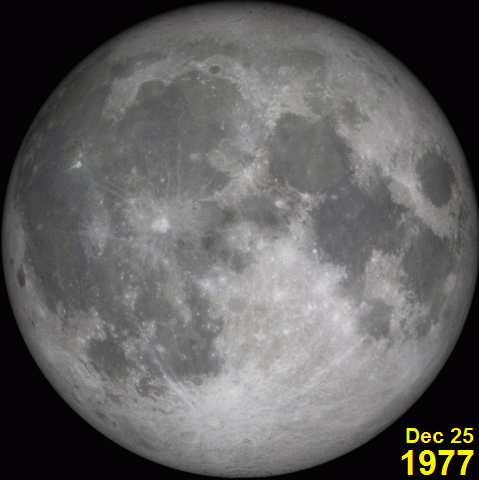This year every month had 1 full moon for a total of 12 full moons in 2017.
In 2018 there will be 13 full moons with one of the months having no full moon. That leaves 11 months with 13 full moons. Thus 2 of the months must each have 2 full moons in 2018.
Is this a big deal? Is this strange?

Source: wikipedia. Christmas full moons 1977-2091
Nope. No big deal. It's just a matter of timing.
(But the moon always showing only one side to the Earth is strange.)
2017 Full Moons (times are Central European Time CET or Summer Time CEST)
Thursday, 12 January 2017, 12:33:58 pm
Saturday, 11 February 2017, 01:32:53 am
Sunday, 12 March 2017, 03:53:48 pm
Tuesday, 11 April 2017, 08:08:07 am
Wednesday, 10 May 2017, 11:42:30 pm
Friday, 9 June 2017, 03:09:36 pm
Sunday, 9 July 2017, 06:06:34 am
Monday, 7 August 2017, 08:10:37 pm (+)
Wednesday, 6 September 2017, 09:02:49 am
Thursday, 5 October 2017, 08:40:08 pm
Saturday, 4 November 2017, 06:22:55 am
Sunday, 3 December 2017, 04:46:59 pm
2018 Full Moons
Tuesday, 2 January 2018, 03:24:06 am
Wednesday, 31 January 2018, 02:26:48 pm ()
Friday, 2 March 2018, 01:51:24 am
Saturday, 31 March 2018, 02:36:54 pm
Monday, 30 April 2018, 02:58:12 am
Tuesday, 29 May 2018, 04:19:36 pm
Thursday, 28 June 2018, 06:53:00 am
Friday, 27 July 2018, 10:20:24 pm ()
Sunday, 26 August 2018, 01:56:12 pm
Tuesday, 25 September 2018, 04:52:30 am
Wednesday, 24 October 2018, 06:45:12 pm
Friday, 23 November 2018, 06:39:18 am
Saturday, 22 December 2018, 06:48:36 pm
(source: fullmoon.info)
(+) indicates a partial lunar eclipse
(++) indicates a total lunar eclipse
A lunar eclipse is when the Earth's shadow goes on the moon.
As you can see, next year January and March each have 2 full moons and February has none
Just a little bit of trivia to have fun with.
Thanks for viewing.
Be sure to upvote and subscribe.
And of course comments are appreciated.